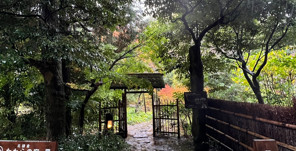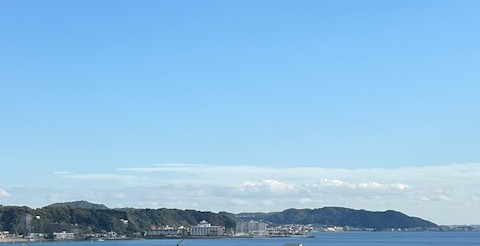照江寺
観光・レジャー
静岡県沼津市江浦70
[地図]
7
沼津の紫陽花寺 ”照江寺” 2024.6.8① Hydrangea Temple in Numazu, "Syoukouji"

観光・レジャー
静岡県・照江寺
沼津にも、紫陽花寺があると知った。それが、どうも夥しい数であるらしい。仕事の都合で、たまたま午前8時半に沼津駅にいる。雨期の紫陽花には似つかわしくないほど、空が眩しい。今日はそのまま休みなので、バスに揺られて20分、照江寺を訪れてみた。
最寄りのバス停は、”江の浦西口”である。伊豆半島ではよく見かける、こじんまりとした漁師町だった。
三方を囲われた湾内なので、海は穏やかである。そのため昔から、急な故障や突発的な天災から船を守るための避難港として重宝されていた。国の内外を問わず、船の出入りの多い港であったようである。港から狭い県道を渡って参道に続く照江寺には、海の安全や豊漁を願う人々がひっきりなしに訪れてきた。
to be a huge number. Due to a work reason, I was at Numazu station at 8:30
a.m. by chance. The sky was too bright like unsuitable for hydrangeas of the
rainy season. So, I decided to visit “Syokouji” by taking 20 minutes by bus as I was just a day off today.
The bus stop near the temple was “Enoura Nishiguti (West side of Enoura
The bus stop near the temple was “Enoura Nishiguti (West side of Enoura
Gulf)”. Here was a small fishermen’s town which I have often seen on Izu
Peninsula.
As the gulf was surrounded on three sides, the sea was very calm. Therefore, it was highly valued as a refuge port to protect their own ships by acute accidents like failures and natural disasters. It seemed to have been a port where many
As the gulf was surrounded on three sides, the sea was very calm. Therefore, it was highly valued as a refuge port to protect their own ships by acute accidents like failures and natural disasters. It seemed to have been a port where many
ships came and went regardless of nationality. “Syokouji” stood at the place
which crossed the narrow prefecture road from a small port. People who prayed the safety of the sea and bountiful catch have been visiting here incessantly.
バスを降りて照江寺に向かう道すがら、一般家庭のお庭にも紫陽花が植わっており、柵から歩道に溢れている。確かこっちの方角なのだがと疑心暗鬼に歩いていると、寺名を刻銘した大きな石碑に出会った。
I got off the bus and headed to “Syokouji”. On the way, I found that residents
grew hydrangeas and the flowers spilled through fences onto a sidewalk. While I walked with suspicion whether I proceeded a correct way or not, I found a
huge stone on which the name of temple was engraved.


照江寺は、臨済宗妙心寺派である。五月沢田の住人、岡田銀右衛門相白である相善が幼き頃に周天和尚に弟子入りし、得度した。岡田家は二人のために、このお寺を建立された、と伝えられている。本尊は聖観世音菩薩である。
境内には大日堂が建立されており、1598年に伊豆修善寺から迎えた大日如来が安置されている。大日如来は特別な機会にしか一般公開されない秘仏であるため、かつては33年に一度の御開帳であった。だが、大正時代からは10年に一度となっている。
“Syokouji! is Myosinji school of Rinzai sect. Souzen who had lived in this area
and was a child of Okada family entered Buddhism world as a discipline under Syuten Priest at his childhood. It is said that Okada family constructed the
temple for them. The principal image of the temple is “Holy Avalokitesvara
Bodhisattva”.
In the temple ground, “Dainichi-do” was also established. “Dainichinyorai” which was sent from Izu Syuzen Temple in 1598 is enshrined in the hall. As the statue was “Secret Buddha”, it opens to the public at the only special opportunity. In
the past, it was opened once every 33 years. But now, the term is once 10
years from Taisho Era.
境内には大日堂が建立されており、1598年に伊豆修善寺から迎えた大日如来が安置されている。大日如来は特別な機会にしか一般公開されない秘仏であるため、かつては33年に一度の御開帳であった。だが、大正時代からは10年に一度となっている。
and was a child of Okada family entered Buddhism world as a discipline under Syuten Priest at his childhood. It is said that Okada family constructed the
temple for them. The principal image of the temple is “Holy Avalokitesvara
Bodhisattva”.
In the temple ground, “Dainichi-do” was also established. “Dainichinyorai” which was sent from Izu Syuzen Temple in 1598 is enshrined in the hall. As the statue was “Secret Buddha”, it opens to the public at the only special opportunity. In
the past, it was opened once every 33 years. But now, the term is once 10
years from Taisho Era.

赤い山門を抜けて階段を登り、本堂前に出る。入り口脇に咲く溢れんばかりの紫陽花は、なかなかの必見である。
I reached at the front of the main hall through a red temple gate and by climbing stairs. You have to observe the overflowing hydrangeas blooming next to the
entrance.


靴を脱いで、本堂に立ち入らせていただくことができる。中では圧巻!縦横3.2mの中に納まる龍と対面できる。
この精緻な”雲龍図”は、市内に住んでいた梅邑という画伯による、照江寺のために龍を描かせてほしいとの依頼を受けたものである。秋田杉板に青墨で、躍動感たっぷりに描かれている。本来は天井画なのであるが、かなりの重量となったため、壁に立て掛けているそうである。
住職のいとこにあたり、芥川賞作家でもある玄侑宗久師が、この雲龍図に詩を授けている。
“身中必ず一頭の龍あり 苦を咬み憂を呑みて成長す汝の龍を大きく育てよ 苦悩を厭わず風に向かえ”
encountered a beautiful and big dragon.
This elaborate “Unryu-zu (Painting of Dragon and Clouds)” was made by an
This elaborate “Unryu-zu (Painting of Dragon and Clouds)” was made by an
artist, Baiyu, who lived in the city. He requested that he wanted to depict
Dragon for “Syokouji”. A chief priest at the time received it. It was depicted on
Akita cedar board with a sense of dynamism by using blue ink. Though it was
originally a ceiling painting, It was too heavy. Therefore, it leaned against a wall.
A cousin of the chief priest, Soukyu Genyu, who won Akutagawa prize gave his poem to “Unryu-zu”.
“We definitely have one head dragon in our body
We grow with biting bitter and swallowing grief
Let’s grow your dragon very bigger
And accept deep suffering and stand against headwind”
A cousin of the chief priest, Soukyu Genyu, who won Akutagawa prize gave his poem to “Unryu-zu”.
“We definitely have one head dragon in our body
We grow with biting bitter and swallowing grief
Let’s grow your dragon very bigger
And accept deep suffering and stand against headwind”

境内は作品地区によって、7つに分かれている。作品とは、現在の橋本宗一住職の手による墨蹟碑である。境内はその作品を展示する美術館の意味合いも持っている。どの地区にも、住職作の幾つもの逸品が、密やかに装飾されている。
The temple ground was divided into 7 areas according to works. The works is “Bokuseki Works (handwriting works on the stone)” made by Soichi Hashimoto chief priest. The temple ground also had the meaning of a museum for the
exhibition of his works. His masterpieces decorated every area secretly.

下のような案内図を記した無料のパンフレットが、本堂内や大楠への階段の手前で配布されている。
The following free pamphlets on which the map of this temple was depicted was arranged inside the main hall and before the stairs continuing a large camphor
tree.


橋本宗一住職は初め、木彫りを造っていた。だが、還暦を迎えたのを機に、作品を末長く残していくためには石彫りがいいのではと考え、墨蹟を作成し始めたそうである。特筆すべきは、自身で巧みにノミやハンマーを使って、長い時間をかけた自作であることであろう。
パンフレットを参照に、葉陰に隠れている大小の碑を探し、石に刻まれた言葉にあれこれ想像を膨らませながら散策するのも、また面白いだろう。
At first, the chief priest, Souichi Hashimoto made the wooden works. But, by
パンフレットを参照に、葉陰に隠れている大小の碑を探し、石に刻まれた言葉にあれこれ想像を膨らませながら散策するのも、また面白いだろう。
taking his 60th birthday as a turning point, he considered that the stone works
was the best choice to leave them forever. Therefore, he started to make
“Bokuseki Works”. What is noteworthy is that he makes them with skillfully using chisels and hammers by himself over a long period of time.
It seems to be good that you search for the large and small works hidden in the shade of the leaves by referring to the pamphlet and stroll around with imaging
It seems to be good that you search for the large and small works hidden in the shade of the leaves by referring to the pamphlet and stroll around with imaging
the essence of the words on the surface of stones.














